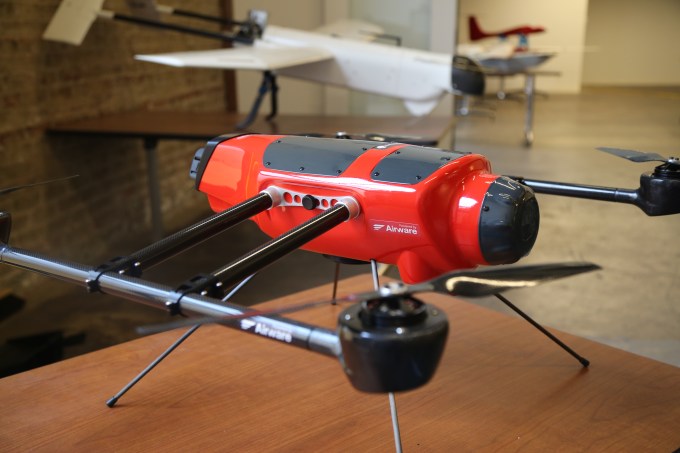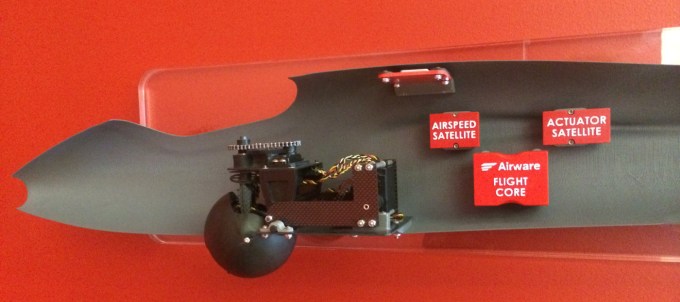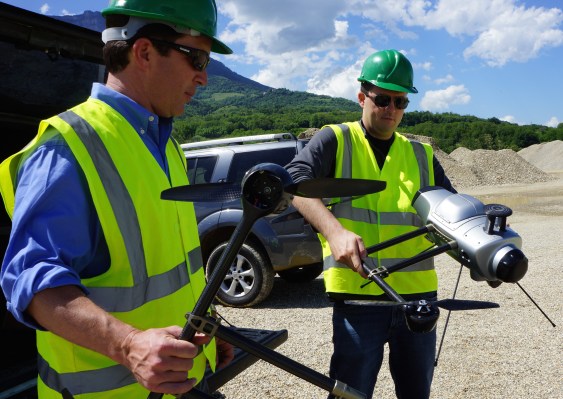Dull, dirty, and dangerous. Those are the tasks robots are best for, but it also describes jobs with General Electric’s Field Services division, inspecting wind turbines and oil pipelines. So today GE Ventures made one of its first major strategic investments in robotics through a new partnership with drone hardware, software, and cloud services platform startup Airware.
GE will provide an undisclosed sum on top of the $40 million Airware’s already raised, assist the startup with technology, and connect it with GE’s huge range of industrial clients. In addition to equity, GE will get to work closely with Airware to “make sure the platform can address a number of their use cases”, Airware CEO Jonathan Downey tells me.
Founded in 2011 by Downey, the son of two pilots, Airware’s operating system lets businesses customize drones for specific commercial purposes, from agricultural land management to industrial inspections to anti-poaching at wildlife preserves.
Open source drone frameworks aren’t flexible enough for many business use cases, but building drones from scratch is prohibitively resource- and engineering-intense. Airware’s platform handles all the basics of unmanned aerial vehicle hardware, the software that keeps the drones in the air, and the cloud services that host and transmit data the drones collect.
Airware’s staff has grown from 40 to 70 since raising $25 million in a round led by Kleiner Perkins in July to push it through its official launch for commercial businesses. But first, it needs to hammer out the software to run the drones in more use cases, and refine their performance for ways they already know how to fly. That’s where GE and its flock of clients will come in handy.
For example, when a client’s wind power turbine’s blade breaks, GE typically has to hoist a human technician hundreds of feet in the air to inspect the blade. That’s dangerous and wildly inefficient. Now GE is working with Airware to teach drones to do the job.

From checking long power lines for downed cables to monitoring gas pipes for leaks, GE hopes that getting close to Airware means it will get its use cases covered so it can become a major customer. Downey tells me “GE is a great customer for fleshing out these sort of use cases.” A power plant inspection might require a more nimble copter-style drone, while checking endless powerlines requires a more plane-like UAV. Airware’s OS is learning to control all of these with GE’s help.
GE Ventures’ Managing Director Alex Tepper tells me his fund could help Airware with tech R&D too, as GE has “developed some incredible breakthroughs. We have great…image processing technologies and sensor software.” Those could make Airware’s drones even smarter. “We love colalboritating with portfolio companies in a number of ways” Tepper says.

Thanks to the partnership, Airware’s UAVs should already be able to fly a wide variety of missions for GE’s clients when it launches next year, creating a built-in customer base. And if Airware ever needs it, it might have a better chance of a soft-landing acquisition by GE.
Society perceives drones as war machines or toys. But beyond dropping bombs and taking selfies, Airware and GE are showing they can bring huge advantages in the commercial sector. These flying robots could make humans’ lives a little more exciting, clean, and safe.

